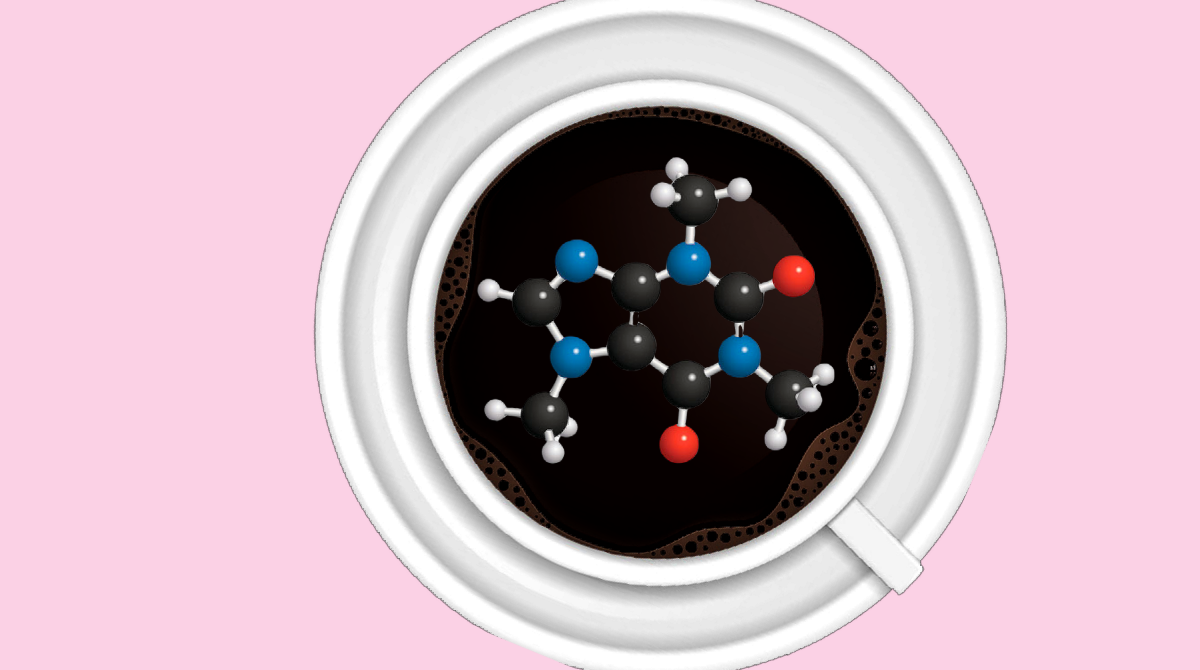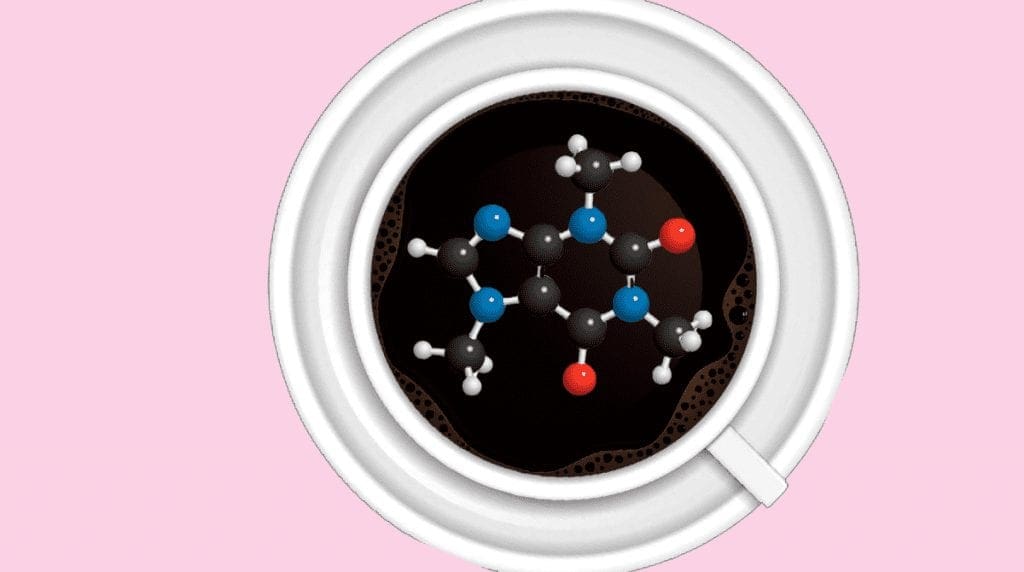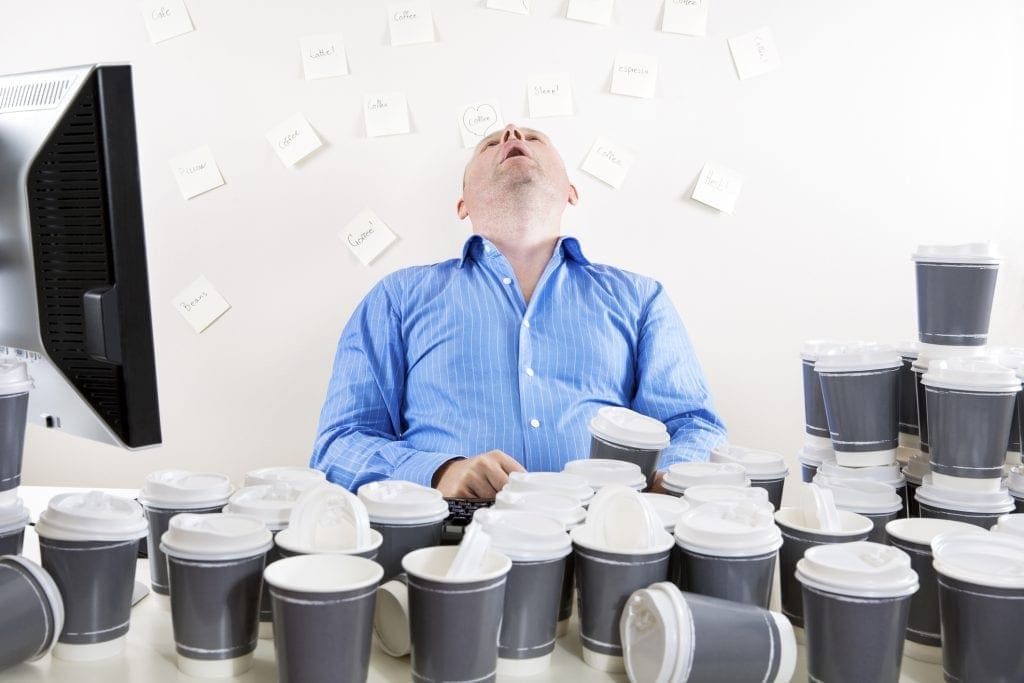

Have you had your dose of psychoactive drugs this morning? If you’ve had your morning cup of coffee, the answer is yes! In fact, caffeine is the most commonly consumed drug in the world.
But just what is caffeine? And, aside from getting you up and ready to face the day, what are its effects on your body?
Caffeine is a naturally occurring substance that acts as a stimulant. In its purest form, it’s a white crystalline substance that tastes quite bitter. Chemically related to the amino acids guanine and adenine found in our DNA and RNA, caffeine is a purine alkaloid—more specifically, a trimethyl xanthine.

Caffeine can be found in the leaves, berries, nuts and seeds of plants such as:
If you’re among the millions of humans who struggle to function without your morning coffee, you’ll already be well-acquainted with the pleasant sensations that result from ingesting caffeine.

It wakes you up, gives you a buzz and makes you feel that bit more ‘human’. It does this by:
Caffeine is well-absorbed by the body, which means you experience its incredible effects within 5–30 minutes after consuming it.
Although caffeine consumption has developed an almost mythical reputation for providing an energy hit. It is not a magic elixir.
Rather, caffeine acts on the body in a number of different ways. It is a central nervous system (brain and spine) stimulant that also acts upon some parts of the autonomic nervous system.
One of the mechanisms responsible for caffeine’s effects involves blocking adenosine receptors. Adenosine is a purine nucleoside that forms from the breakdown of ATP, a main energy source for your cells. Adenosine is great at making muscles relax, and provokes vasodilation. As a neurotransmitter, adenosine acts as a central nervous system suppressant that promotes sleep and prevents arousal. So by sneaking in and binding to adenosine receptors, caffeine blocks adenosine being able to tell your muscles to relax and for your blood vessels to dilate, and also prevents you from feeling relaxed and sleepy.
Another mechanism involves ryanodine receptors, which are commonly found in heart and skeletal tissue. This leads to increased heart rate due to the caffeine prompting abnormal intracellular calcium release. Some people may experience caffeine-modulated arrythmias.
Caffeine also stimulates the production of other neurotransmitters and hormones such as catecholamines (common types include dopamine, adrenaline/epinephirine and norepinephrine), which prompt your body to go into a hyperglycaemic state—a fancy way of saying that you’re hyped up with high blood sugar, no red cordial required.
Caffeine is one of the very few psychoactive CNS stimulants in the world with no restrictions or regulations. To give you an idea of how popular it is, consider that worldwide about 10 million tonnes of coffee beans are consumed each year.

Depending on the type of coffee beans used, a cup of coffee commonly contains 80–175 mg of caffeine. The average person would need to consume 50–100 cups of coffee in a day to reach toxic levels.
That said, don’t overdo it or you could experience some nasty side effects including:
While a few cups of coffee are fairly benign, pure caffeine can be potent! Consuming 10 g (roughly one tablespoon) of caffeine powder can be fatal for most people.

It only takes a couple of cups a day, to build up a tolerance for caffeine. If this is your habit, abruptly stopping your caffeine consumption could lead to:
These symptoms of caffeine withdrawal arise within 12 to 24 hours of your last cup, and they can last around seven days. The best way to avoid these is to gradually reduce your daily amount of caffeine consumption.
Chemwatch is here to help
We may not be able to help with your caffeine withdrawal (our headquarters is in Melbourne, so we’re much better at recommending where you can find the good stuff), but when it comes to chemical safety, we’re at the top of our game. If you have any questions about the safety, storage and labelling of your chemicals, please do not hesitate to get in touch with us. Our friendly staff draw on expert knowledge gained over many years of experience to offer the latest industry information and advice on how to stay safe and comply with chemical regulations.
Sources